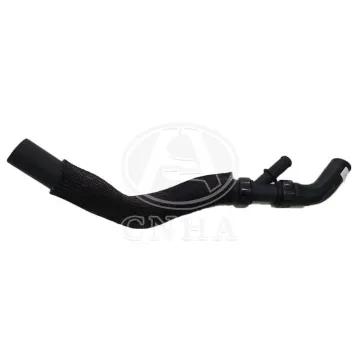Applications of Rubber Hoses
May. 14, 2021
Rubber hoses are designed for specific fluid, temperature, and pressure ranges and are provided in various specifications. Rubber hoses consist of a minimum of three layers: a seamless synthetic rubber tube; one or more reinforcing layers of braided or spiraled cotton, wire, or synthetic fiber; and an outer cover. The inner tube is designed to withstand the attack of the fluid that passes through it. The braided or spiraled layers determine the strength of the hose. The more layers there are, the greater the pressure rating is. Hoses are provided in three pressure ranges: low, medium, and high. The outer cover is designed to withstand external abuse and contains identification markings. Here is a rubber hoses supplier talking about applications of rubber hose.
This part specifies requirements for rubber and plastic hoses and assemblies for carrying gasoline, kerosene, fuel and lubricating oils, including aviation fuels with an aromatic hydrocarbon content of not more than 50% at temperature up to 80°C. All types are suitable for use with a vacuum not exceeding 0.5 bar.
The ISO standard specifies electrical conductivity of rubber hoses. The maximum permitted resistance between the fittings of the entire section of hose is expected to be below 2×106 ohm/m.

Radiator Hose
Fuel dispensing hoses are specified by ISO standard. Their electrical resistance on full length as measured by ISO standard should be lower than 106 ohms. A specially designed instrument and electrodes are used for measurement of electrical resistance of rubber hoses. Also, British/European standard136 specifies rubber and plastic hoses and hose assemblies for measured fuel dispensing systems.
Aerospace PTFE hoses and their assemblies are tested in a form of full assembly for electrical conductivity to demonstrate that the hose is sufficiently conductive to prevent the build-up of excessive electrostatic charges which could cause arcing and pin holes.
Rubber Hose
Rubber hose is widely used in conveying systems for both pipeline and bends and in systems where a degree of natural flexibility is required. Its particular properties also make it ideal for use in systems where the material being conveyed may be friable, abrasive, or cohesive. Its natural flexibility makes it ideal for use in vacuum off-loading applications, mobile conveying systems, and for joining pipeline sections in situations where standard pipeline bends will not match the geometry required.
Erosive Wear and Particle Degradation
Rubber hose has the capability of withstanding erosive wear better than steel pipeline in certain situations. Although the hardness of the surface material is generally much lower than that of alternative metal surfaces, and of the particles impacting against the surface, it derives its erosive wear resistance from the fact that it is able to absorb much of the energy of impact by virtue of its resilience. By the same mechanism, the impact energy of friable materials can also be absorbed and so particle degradation may also be reduced appreciably.
Pressure Drop
Problems of erosive wear and particle degradation are particularly severe in high-velocity dilute phase conveying. Unfortunately the pressure drop for gas–solid flows through rubber hose also increases with increase in velocity, and more so than for steel pipeline. In a program of tests with cement, the author tested both steel and rubber hose and found that for low-velocity dense phase conveying, there was little difference in pressure drop between the steel and rubber hose. As the airflow rate, and hence velocity was increased, however, the pressure drop through the hose increased significantly.






